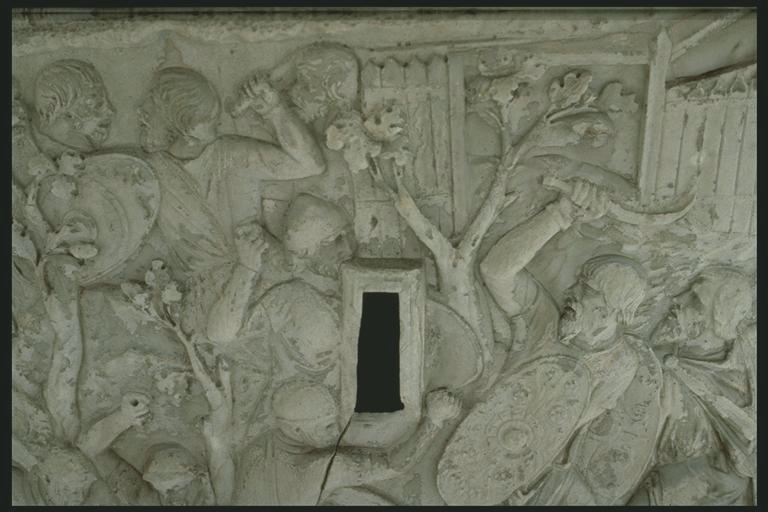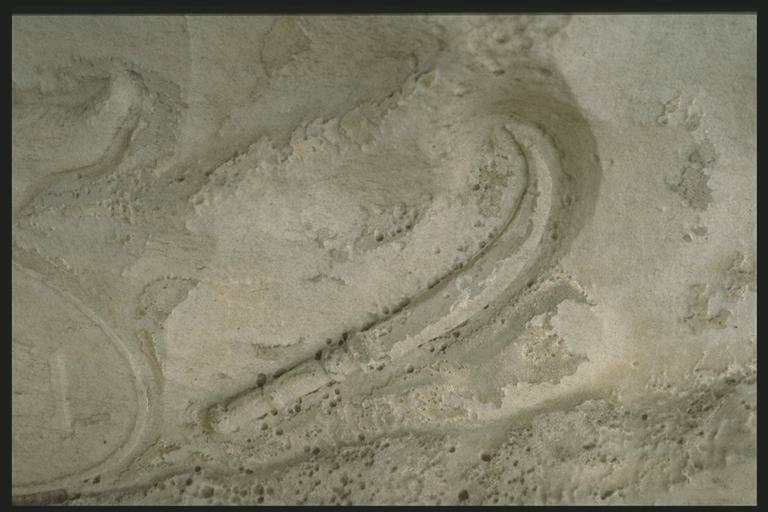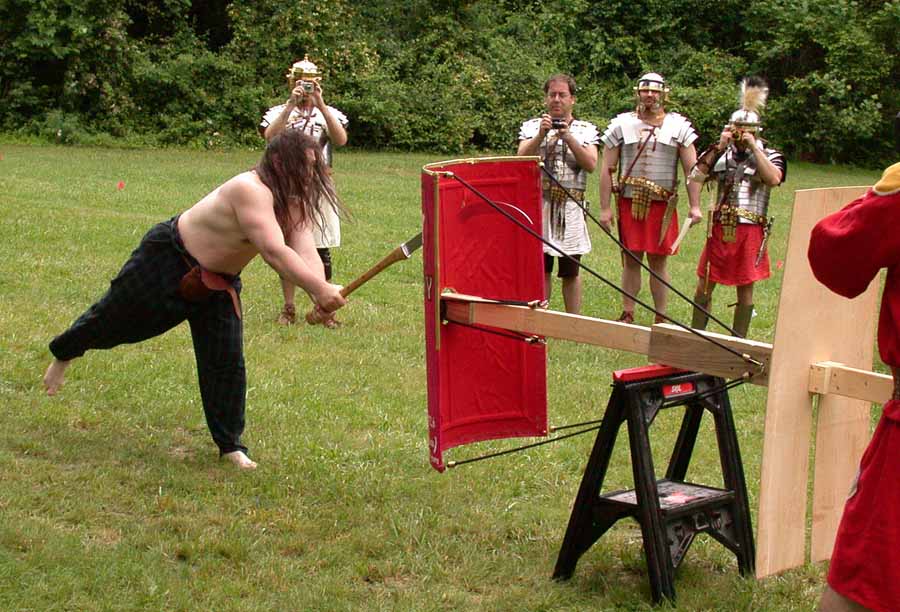
 |
|
|
#31 |
|
Member
Join Date: Nov 2010
Posts: 129
|
More on lead tempering:
It ws used on the backs of knife blades, but a spirit lamp was used for the edge... The Hardeneing and Temering of Steel by Fridolin Reiser page 96 link http://books.google.co.uk/books?id=W...dening&f=false More in Gunsmithing by Roy E Dunlap pages 121 to 122 link: http://books.google.co.uk/books?id=7...pering&f=false but again although he mentions tempering in a bath of molten lead for small parts, the main procees described is the previous stage of hardening... More on melting points, and salts used in the molten state for tempering at http://www.weights-and-measures.com/xcommetalsalt.html More on tempering of steels at http://www.toolmakers-microscope.com...nd-alloys.html |
|
|

|
|
|
#32 |
|
Member
Join Date: Jan 2007
Posts: 803
|
Interesting thread!
Billman, In your first post in this thread, you mentioned the bill-hook becoming the slasher of England. Just wanted to say that the bill-hook and slasher are used in conjunction, and are still separate tools, even today. We used both for cutting hedges, the bill for hedge-laying, or dealing with thicker more resistant wood, and the slasher for cutting the springy newer growth. As this is a bit off topic, I'll say no more, but just wanted to clarify.... Best, R. |
|
|

|
|
|
#33 |
|
Member
Join Date: Nov 2010
Posts: 129
|
Ref billhooks and slashers - there is little historical record for the slasher in the Roman to Medieval period - many hundreds of billhook blades survive, ditto sickles, scythes and axes - but little or nothing that can be identified as a slasher blade. It is thus probable this, like sugar cane knives and many other tools used for cutting crops and fodder, developed from the billhook. It is also very probable that despite some history of 'live' fences that it did not develop in the UK until after the enclosures of the 18th century. 14th to 16th century manuscripts show many pictures of billhooks, but again little in the way of a long or long handled handled tool - except in some countries, where gardeners also carry a sword (a precursor of the machete???)
Illustrations from Opus Ruralium c 1495 The terms billhook and slasher were not in common usage prior to about 1800, the common terms being hand-bill and hedging-bill respectively. Blakie c 1820 is one of the first to mention billhooks, also Loudon c 1831 who shows a switching-bill (staff-hook) and the heavier breasting knife (slasher). Henry Stevens c 1860 calls slashers cutting-bills. Loudon also shows a long handled 'scimitar', a thin sword like tool used for dressing the faces of hedges, and Blakie mentions a 'slashing knife'... The latter is similar to tools used in the vineyards of France for removing excess leaves from the vines, a process called relevage or épramprage. A straight, or only slightly curved, sickle, often made from an old or broken scythe blade, and known as a 'serpe à désherber' or 'faucille à épramprer'. Similar tools would have been used by the Romans, and presumably also in the vineyards of Spain and Portugal... I know that today the billhook and slasher are regarded as different tools, but in reality they are two sorts of the same tool - one with a longer handle than the other (c.f. the Yorkshire billhook, where the same blade can have a 12", 24" or 36" handle) - all descended from the medieval bill... Last edited by Billman; 14th November 2010 at 07:24 PM. Reason: Add details of tools for 'éprampage' |
|
|

|
|
|
#34 |
|
Member
Join Date: Jan 2007
Posts: 803
|
Thanks for he reply, Billman.
Yes, it was in Yorkshire where I did my hedge work, and indeed, we had short handled and long handled bills. My point was that a bill didn't Become a slasher, as both are still in use even today. A Bill may have stimulated the developement of the slasher, but the slasher is designed for different work to the bill. We used straight bladed slashers, back-curved slashers, and "switching slashers"...with forward curved light long blades. They are all ideal for certain types of work,... as is the bill. I make no claims re. the age of slashers, as they are most likely Products Of the Enclosure act, (..as you say), Rather Than "descendants" of the bill.....designed for different work when the need arose. Best, R. |
|
|

|
|
|
#35 | |
|
Member
Join Date: Mar 2006
Location: Room 101, Glos. UK
Posts: 4,271
|
Quote:
details from trajan's column:   photo of dacian attacking a roman scutum while showing off, note the ancient digital camerae in use by the romans who left the photo on an ancient SD memory card recently unearthed.  more roman snapshots Last edited by kronckew; 14th November 2010 at 05:29 PM. |
|
|
|

|
|
|
#36 |
|
Member
Join Date: Nov 2010
Posts: 129
|
Thanks for those images of the dreaded Dacian falx - again lots of debate on the origins - tool or weapon??? I guess that like the bill of the medieval English footsoldier, the beidane of the Italian Swiss border region of Piemonte, the trombash/trumbash of the Mangebetu and other sickle weapons of central Africa, the tool and the weapon are closely related, even interchangeable at times.... which came first is a bit like the chicken and the egg question..
In England a national standing army, centrally equipped, only came into being after the Napoleonic Wars - before that local squires raised local yeomanry companies that had to equip themselves.... hence the diversity of weapon shapes and types (with the possible exception of the long bow). The Romans may have been a bit better organised - but most of their enemies appear to have been small kingdoms locally equipped. Only large and powerful countries or city-states could afford to have and equip a permanent fighting force. We have digressed a little from machetes, but it is likely that their development follows the same process - an existing tool (billhook, pruning hook or vine-leaf pruning knife) or weapon (sword or cutlass) altered to suit a local need - in the same way that over 200 regional billhook shapes exist in both the UK and France - all to carry out the same basic function of cutting geen wood, but all altered to suit the user and the local conditions (the hedges of Devon are different to those of Wales, which are different to those of the Midlands or Yorkshire and so on)... Even the death of a smith can have an effect on the way a weapon or tool is/was made -the later Tenterdon billhooks made by Elwell c 1960 are the same shape, and have the same stamps, but are twice the thickness and weight of those made 20 years earlier.... different smith - different tool (or weapon)... Last edited by Billman; 14th November 2010 at 07:35 PM. |
|
|

|
|
|
#37 |
|
Member
Join Date: Dec 2004
Posts: 1,247
|
Hi Billman,
I'd disagree about hedges being an 18th century invention. According to the British historical ecologists I've read, hedges are much older (cf: books by Arthur Rackham). But let's get to some linguistics? The Dacian implement was termed a falx, and that name comes into French as fauchard, which implements such as bank blades are still called in French. In English, a fauchard is a bill. To my eye, falx also looks like it gave rise into falchion, and the conventional excuse for the relative dearth of historical falchions relative to swords was that they were used in agriculture when not used in the field. I'm not going to try to trace the machete from the falchion, but I think they were similar blades doing similar things, and I also think the linguistic evidence suggests that the falx and the falchion are related, at least according to the people who used them. Best, F |
|
|

|
|
|
#38 |
|
Member
Join Date: Nov 2010
Posts: 129
|
No, hedges are much older than the 18th century - but up to that date they were old hedges - often the remains of ancient woodlands left to define boundaries... After the Enclosure Acts, small medieval field systems were consolidated into large fields, marked out by ditches and with new hedges of thorn planted on the top of the mound of earth. Southern and Midlands counties had tens of thousands of miles of new hedges planted. After a few years the new hedges required trimming and making into animal proof barriers. So the old craft of pleaching became the widespread craft of hedgelaying.... from that time just about every farm labourer became proficient at hedge laying and so required a billhook or two... Every five to ten years they need re-laying...
Ref falx, falchion, faucille etc.... Falx is the Latin for a curved cutting tool - in latin its designation was qualified by an adjective, hence falx vinitoria was the name for the vine pruning billhook. On its own falx usually referrred to a scythe for grass cutting, but also a smaller sickle (both tools were used in Roman times). Latin was the language of scholars and scribes, and was used for legal documents, inventories of possessions, historical records (Latin terms are still used in English law and in medicine today). Many languages incorporate Latin roots, English and French included - in french a scythe is a 'faux' and a sickle a 'faucille' - literaly a small scythe... Dialect names include 'faucillon' and 'fauchard' (amongst others from other languages - remember 150 years ago only about 10% of the french spoke french as a first language). A scytheman is a 'faucheur'... The Romans use of the word 'falx' to define the Dacian sword was thus a reference to its shape, not necessarily its function.... Regarding the lack of historical evidence - most battle sites were scavenged for anything of value - weapons and the iron and steel they were made of were valuable assets.. In times of peace, weapons were no longer required - think of recent history - after WWll some weapons remained in private hands, but most went back to the armouries... How much medieval weaponry or armour remained in the 19th century; how many 19th century weapons remained in the Royal Armouries in the 20th century??? Even possession of hand tools has changed - as a boy in the 1950's I used a billhook daily to cut firewood - every house in our small town of 5000 inhabitants had at least one. Today, 50 years later, most people have never seen one - they switch on the central heating when they are cold; they prune their hedges with an electic hedge trimmer; use secateurs on fruit trees and roses.... Apart from a minority who either collect them, or use them for conservation work, they have died out of the collective memory and if a catastrophe destroyed our civilisation they would appear to be a rarity.... 50 years ago the situation would have been different, 150 years previous to that even more different... After 1000, or 2000, years even less would have survived... Last edited by Billman; 15th November 2010 at 10:13 AM. |
|
|

|
|
|
#39 |
|
Member
Join Date: Jan 2007
Posts: 803
|
Billman,
Re the newer and older Elwell bills; We had a newer one, clumsy thing it was. Gave it away when we came to Canada. The old ones came with us!! One of the old ones was very light, good even for a lot of slasher work. A short bill sits beside the stove in the workshop, used for splitting kindling... It was made in 1915, I believe. |
|
|

|
|
|
#40 |
|
Member
Join Date: May 2010
Location: Dortmund, Germany
Posts: 102
|
Interesting thread...
Here is a regional billhook from the area where i live. It is called "Haubergsknipp" or just "Knipp". It is used in a traditional kind of woodland management called "Hauberg" for clearing out the underbrush and removing small twigs. The bill was used to scarify the bark of the trees so it could be peeled. The bark was harvested as tanning agent. The wood was used to make charcoal. http://www.hauberg.onlinehome.de/de/jahreslauf.html Sadly, i couldn't find any english language description decription  The depicted specimen is roughly 100 years old and has been used for at least 70 years. Best Regards Thilo |
|
|

|
|
|
#41 |
|
Member
Join Date: Dec 2004
Posts: 1,247
|
Hi Mrwizard,
I think the English term may be coppicing (Wikipedia link). The use of oak bark for tanning is quite old, of course. Best, F |
|
|

|
|
|
#42 |
|
Member
Join Date: May 2010
Location: Dortmund, Germany
Posts: 102
|
Thanks Fearn,
"coppicing" is indeed the correct term. :-) |
|
|

|
|
|
#43 |
|
Member
Join Date: Feb 2006
Location: France
Posts: 473
|
|
|
|

|
|
|
#44 |
|
Member
Join Date: Nov 2010
Posts: 129
|
Hi
Thanks for the pictures of the knipp - hippe - haap - haumesser... I have another with the same stamp, but a little older I think... A similar one stamped FK was also for sale in the US earlier this year, sold as having been made by the Philidelphia Germans (it even had a certificate of provenance) - shame that I had seen it for sale on eBay.de in 2009, several months earlier - the same tool, same stamp and decoration, same marks on the handle and traces of the orange paint still on the blade.... A few images of HK and FK stamped tools, a couple from Polhiem (I had to buy the nasty knife with them) and one by A Metz of Nenkersdorf, - not all images are of my hippen, I copy from ebay even if I do not buy the tool.. Decorated tools were fairly common in parts of Europe... Haven't found how to sort images into the text, or change their order, so I have just found and added the original image of the one sold in US at the end... compare to the picture above Last edited by Billman; 11th December 2010 at 11:02 PM. |
|
|

|
|
|
#45 |
|
Member
Join Date: May 2010
Location: Dortmund, Germany
Posts: 102
|
Awwww, and i thought i would add something new
 But i will see if i can figure out who FK and HK were, i already have an idea whom to ask. Attached some more knipps i found lying around... Greetings from Siegen, Thilo |
|
|

|
|
|
#46 |
|
Member
Join Date: Nov 2010
Posts: 129
|
More images of decorated hippen - good to meet another enthusiast...
|
|
|

|
|
|
#47 |
|
Member
Join Date: Nov 2010
Posts: 129
|
and a few more - the 1914 one is en route from DE to GB....
Another name I found is rubenkopfbeil - which I believe roughly translates to beet head axe i.e. a beet trimming knife, but I think this is an error as they are not so ornate and do not have a 'beak' I note many of these hippen (especially those from the Bayern region) have blades with a single bevel, like a side axe... What tasks were they used for??? Similar tools are found in France and also some parts of England - in France coppice work is called taillis - Google gives a translation of coppice to niederwald in German Last edited by Billman; 11th December 2010 at 10:59 PM. |
|
|

|
|
|
#48 |
|
Member
Join Date: Dec 2004
Location: Houston, TX, USA
Posts: 1,254
|
as I've mentioned before in this matter, the introduction of iron-working into the Caribean/Americas was not just by Europeans, but also by those other "Westerners" the Africans who accompanied the Europeans. These people retained considerable of their own customs and practices, and I think this significantly informs the development of the thin-bladed machete, including hook-bladed forms. I've seen antique hook-blade Caribean and N American work swords with features that clearly hark to the fighting mambeles of the Congo region. The thinness often noted in African weapons is a very functional characteristic in fast movement and deep cutting (less friction/wedging)
|
|
|

|
|
|
#49 |
|
Member
Join Date: Dec 2004
Location: Houston, TX, USA
Posts: 1,254
|
I'm loving these work-swords, BTW!
Particularly thrilling are the tangs thicker'n the blades, which is seen on some African stuff as well, interestingly enough. |
|
|

|
 |
| Thread Tools | Search this Thread |
| Display Modes | |
|
|